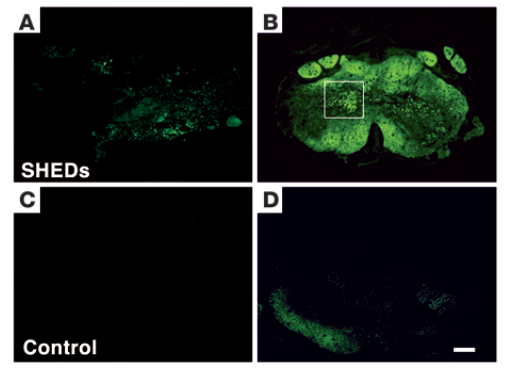

Human dental pulp-derived stem cells promote locomotor recovery after complete transection of the rat spinal cord by multiple neuro-regenerative mechanisms
Introduction
The development of effective treatments for spinal cord injury
(SCI) has been stifled by this injury’s complicated pathophysiology
(1). During the acute phase, the focal mechanical insult
disrupts tissue homeostasis. This triggers secondary injury processes
in which multiple destructive cascades cause the necrotic
and apoptotic death of neurons, astrocytes, and oligodendrocytes,
which spreads beyond the initial injury site and leads to irreversible
axonal damage and demyelination (2, 3). Subsequently, reactive
astrocytes and oligodendrocytes near the site of injured spinal
cord (SC) respectively produce chondroitin sulfate proteoglycans
(CSPGs) and myelin proteins (including myelin-associated glycoprotein
[MAG], Nogo, oligodendrocyte myelin glycoprotein
[OMgp], netrin, semaphorin, and ephrin). These extracellular molecules
function as axon growth inhibitors (AGIs), acting through
the intracellular Rho GTPase signaling cascade (4). These multiple
pathogenic signals synergistically accelerate the progressive
deterioration after SCI. Therefore, therapeutic strategies for functional
recovery from SCI must exert multifaceted reparative effects
against a variety of pathogeneses (2).